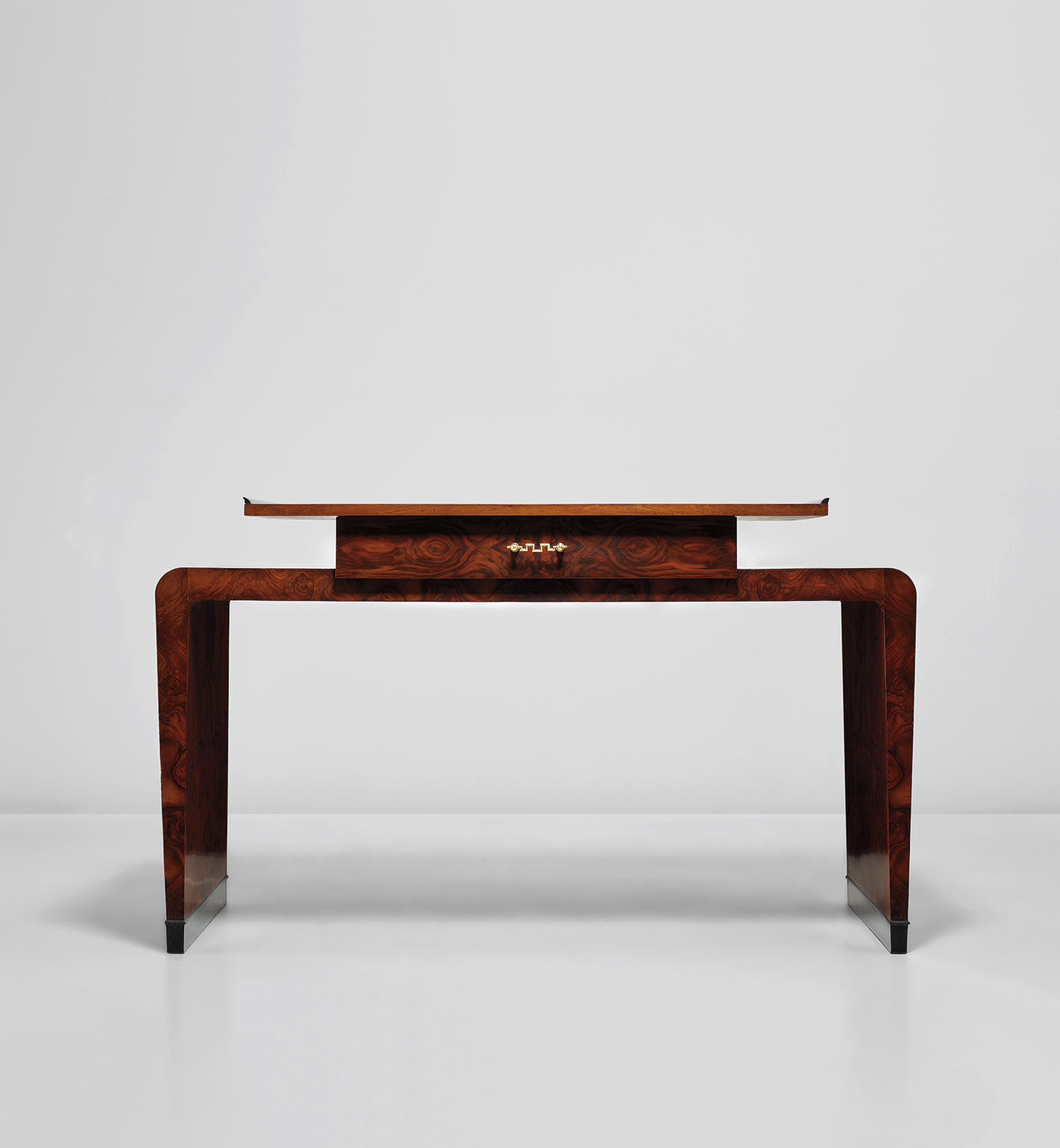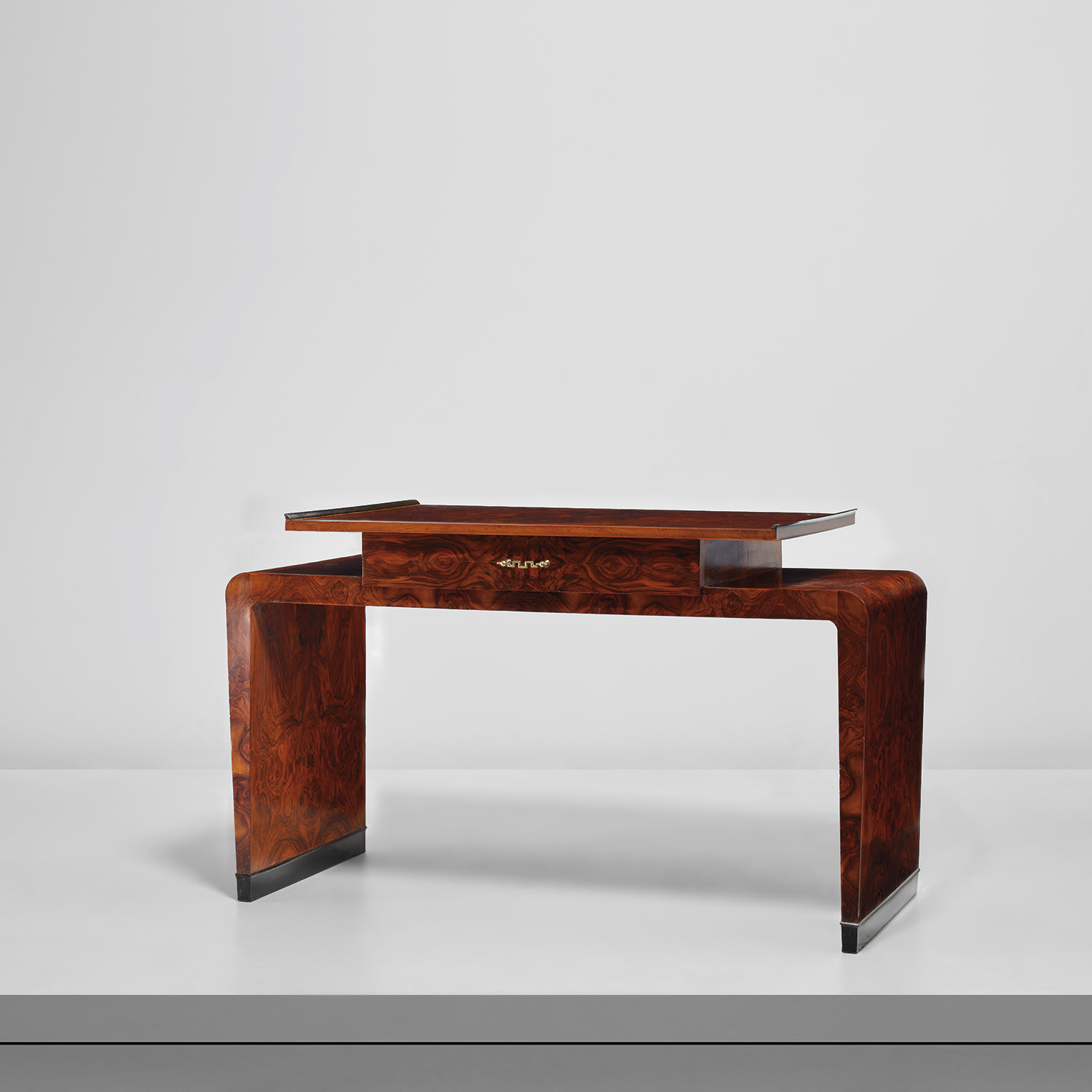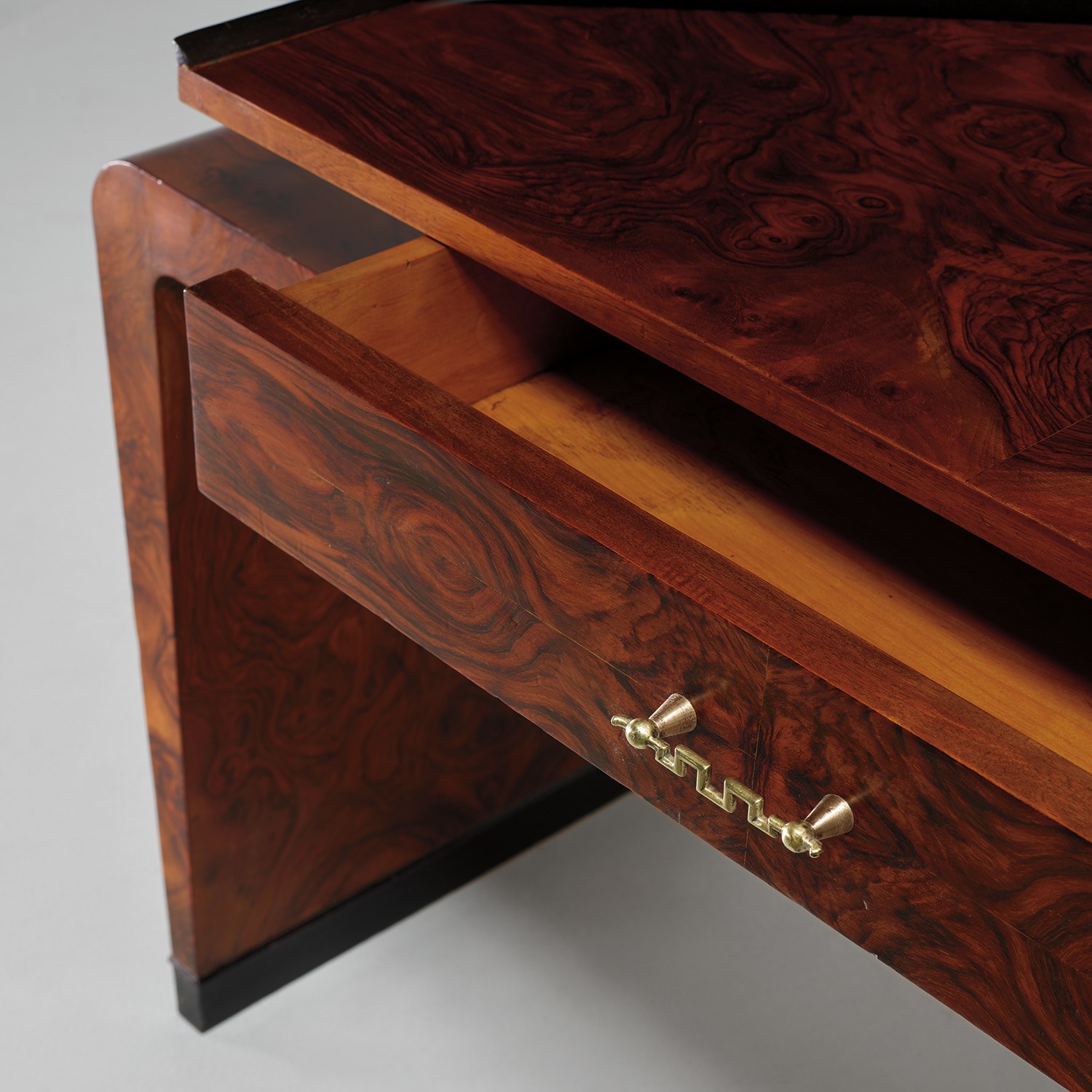







19
Gio Ponti
Desk
Full-Cataloguing
Designed during the 1930s for a private commission, the first desk (lot xx), executed in highly figured curl walnut veneer with painted wood and brass details, illustrates Ponti's finely crafted, luxury furniture for the upper-middle class home. The elegant form of the desk, in which the legs extend beyond the surface of the tabletop, suggest a spacious original setting. The desk recalls Ponti’s earlier neoclassical designs of the 1920s, which were often executed using precious woods and metals with an emphasis on decoration, but in the present work has already become simplified in form.
The second example (lot xx) is a double desk designed by Ponti for the Banca Nazionale del Lavoro, Milan during the 1950s. The desk retains the use of veneered wood with brass details, but is now more formalist in its design. The frame is punctuated with apertures giving the desk a greater lightness, which Ponti continued to seek throughout his career. The desk’s angled walnut legs with brass sabots are characteristic of the architect’s furniture designs of the decade. Ponti designed variants of this economic and robust model including a version with plastic-laminated tabletop and single versions of the design in different sizes that could be conveniently rearranged within the office.
During the 1950s, Ponti developed his ideas for multifunctional designs. The architect began working with industrially produced material, as illustrated in the third desk (lot xx), manufactured by Rima, which allowed for the incorporation of movable elements. Like the previous office desk, the tabletop of this design could be customised. Furthermore, the metal frame could be constructed with different configurations of the revolving tray (for example to store a telephone), drawer unit, removable perforated metal drawer and even an adjustable lamp, giving the user greater flexibility.
Designed during the 1970s, the final desk (lot xx) features two built-in swiveling chairs, shelving, trays and drawers, all set on castors. Geometric in surface and form, the desk is part of Ponti’s last collection of furniture, the ‘Apta’ series. Intended for a multifunctional home, the designs are lightweight, compact and mobile. Re-thinking traditional furniture typologies that were intended for specific rooms, Ponti conceived the ‘Apta’ series to be versatile in order to adapt to contemporary life.
Gio Ponti
Italian | B. 1891 D. 1979Among the most prolific talents to grace twentieth-century design, Gio Ponti defied categorization. Though trained as an architect, he made major contributions to the decorative arts, designing in such disparate materials as ceramics, glass, wood and metal. A gale force of interdisciplinary creativity, Ponti embraced new materials like plastic and aluminum but employed traditional materials such as marble and wood in original, unconventional ways.
In the industrial realm, he designed buildings, cars, machinery and appliances — notably, the La Cornuta espresso machine for La Pavoni — and founded the ADI (Industrial Designer Association). Among the most special works by Gio Ponti are those that he made in collaboration with master craftsmen such as the cabinetmaker Giordano Chiesa, the illustrator Piero Fornasetti and the enamellist Paolo de Poli.